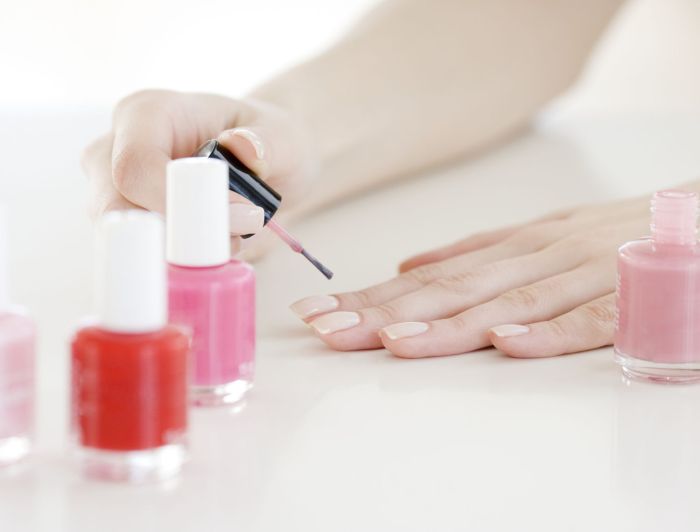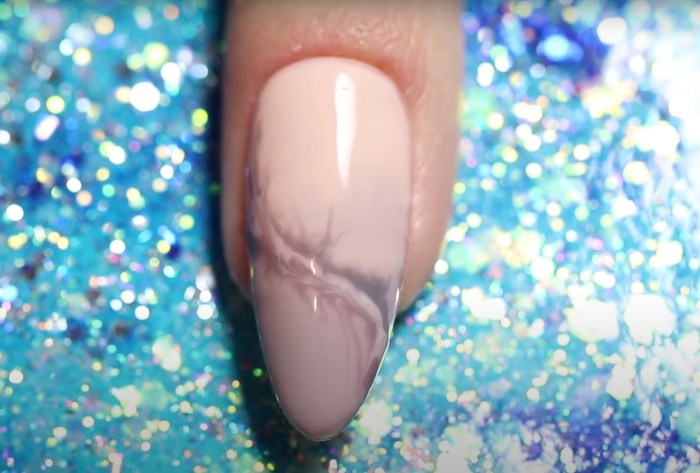How Long Should You Keep Nail Polish?
Shelf Life of Nail Polish

Source: southernliving.com
How long should you keep nail polish – Understanding the shelf life of nail polish is crucial for maintaining its quality and ensuring safe application. Several factors influence how long your nail polish remains usable, from the type of polish to its storage conditions. This section will explore these factors, providing guidelines for determining when your polish has expired and is no longer suitable for use.
Factors Affecting Nail Polish Shelf Life
The lifespan of nail polish is significantly affected by its composition, storage environment, and handling. Ingredients like solvents, pigments, and polymers contribute to its stability. Exposure to air, light, heat, and extreme temperature fluctuations can accelerate degradation. Improper storage, such as leaving the bottle open or storing it in direct sunlight, drastically reduces its shelf life.
Expected Lifespan of Different Nail Polish Types, How long should you keep nail polish
Different types of nail polish have varying shelf lives. Cream polishes typically last 1-2 years, while gel polishes, due to their more robust formulation, can last up to 3 years. Metallic polishes, often containing more complex pigments, may have a shorter lifespan, around 1-1.5 years. These are general guidelines, and actual lifespan may vary based on storage and usage.
Signs of Spoiled Nail Polish

Source: howlongdoeslast.com
Several indicators signal that your nail polish has gone bad. A change in texture, from smooth and creamy to thick and clumpy, is a common sign. An unpleasant, strong odor, different from the original scent, indicates deterioration. A significant change in color, including fading or discoloration, suggests the polish has lost its quality and may not apply smoothly.
Comparison of Nail Polish Shelf Life Across Brands
While precise shelf life varies significantly based on individual storage conditions and product formulations, this table provides a general comparison across popular brands. Note that these are estimates, and individual experiences may differ.
| Brand | Cream Polish (Years) | Gel Polish (Years) | Metallic Polish (Years) |
|---|---|---|---|
| Brand A | 1-2 | 2-3 | 1-1.5 |
| Brand B | 1.5-2.5 | 2.5-3.5 | 1-2 |
| Brand C | 1-1.5 | 2-2.5 | 0.5-1 |
| Brand D | 2-3 | 3-4 | 1.5-2 |
Impact of Storage on Nail Polish Longevity
Proper storage is paramount in extending the life of your nail polish. Factors such as temperature, light exposure, and humidity significantly influence its quality and longevity. This section details optimal storage practices and their impact on preventing issues like thickening and separation.
Optimal Storage Conditions for Nail Polish
Store nail polish in a cool, dark, and dry place. Avoid direct sunlight, as UV rays can degrade the pigments and alter the polish’s consistency. Ideal temperatures range from 50°F to 70°F (10°C to 21°C). Consistent temperature is key; avoid extreme fluctuations that can cause separation or thickening.
Preventing Nail Polish Thickening or Separation
Tightly close the bottle after each use to prevent solvent evaporation, which causes thickening. Store bottles upright to avoid pigment settling and separation. Gently rolling the bottle between your palms before use can help redistribute the pigments and create a more even consistency.
Effects of Extreme Temperatures and Humidity
Extreme temperatures, both high and low, can significantly affect nail polish. Heat can cause the solvents to evaporate quickly, leading to thickening and clumping. Cold temperatures can cause the polish to become viscous and difficult to apply. High humidity can also promote bacterial growth and lead to spoilage.
Infographic: Proper Nail Polish Storage Methods
Imagine an infographic with a central image of a neatly organized nail polish rack. Arrows point to key elements: a cool, dark, and dry location (represented by a shaded area), bottles stored upright, and the instruction to tightly close the lids after each use. The infographic also includes a thermometer showing the ideal temperature range (50°F to 70°F) and a symbol representing low humidity.
A small image depicts a nail polish bottle being gently rolled before use.
Using Old Nail Polish: Risks and Benefits
While using old nail polish might seem economical, it’s essential to weigh the potential risks against the benefits. The consistency and application may differ from new polish, and there are health implications to consider. This section will explore these aspects, providing guidance on safe practices.
Generally, nail polish maintains its quality for about two years if stored properly. However, factors like exposure to light and temperature can affect this. For instance, if you’re a fan of vibrant colors, you might want to check the consistency of your essie peak show nail polish after a year or so. Regardless of brand, always check for thickening or changes in texture to determine if it’s still usable.
Potential Risks of Using Expired Nail Polish
Using expired nail polish carries risks of bacterial contamination, leading to potential infections. The altered chemical composition may also cause allergic reactions or skin irritations. The changed consistency can result in uneven application and a less attractive finish.
Consistency and Application of New vs. Old Nail Polish
New nail polish generally applies smoothly and evenly, creating a consistent, glossy finish. Old nail polish, due to solvent evaporation and pigment separation, may be thick, clumpy, and difficult to apply, resulting in an uneven, streaky finish.
Methods for Thinning Out Thickened Nail Polish
Several methods can help thin out thickened nail polish. Adding a few drops of nail polish thinner specifically designed for this purpose can restore its consistency. Alternatively, adding a drop or two of acetone (carefully and sparingly) can also help, but be mindful that this may slightly alter the color or shine.
Precautions When Using Older Nail Polish
- Inspect the polish carefully for any signs of spoilage before use.
- Perform a patch test on a small area of skin to check for allergic reactions.
- Use a fresh brush to avoid transferring bacteria or contaminants.
- Clean your nails thoroughly before and after application.
- Discard the polish if it exhibits any signs of spoilage or if it causes irritation.
Disposal of Expired Nail Polish: How Long Should You Keep Nail Polish
Proper disposal of expired nail polish is crucial for environmental protection and personal safety. This section Artikels environmentally responsible methods, including cleaning the bottles before disposal and adhering to local regulations.
Environmentally Responsible Disposal Methods
Many communities offer hazardous waste disposal programs that accept nail polish. Check with your local waste management authority for specific guidelines. Alternatively, some nail salons may accept used nail polish for proper disposal. Avoid pouring nail polish down the drain, as it can contaminate water sources.
Cleaning Nail Polish Bottles Before Disposal
Before discarding nail polish bottles, clean them thoroughly to remove any residual polish. Use a suitable solvent like acetone or nail polish remover to wipe out the bottle. Rinse the bottle with water and allow it to dry completely before disposing of it in accordance with local regulations.
Regulations Regarding Nail Polish Disposal
Regulations regarding nail polish disposal vary by region. Some areas may require special handling of hazardous waste, while others may allow disposal with regular household trash. Always check with your local authorities for the most up-to-date regulations and guidelines.
Step-by-Step Guide for Safe and Eco-Friendly Disposal
- Check with your local waste management authority for disposal guidelines.
- Clean the nail polish bottle thoroughly with acetone or nail polish remover.
- Rinse the bottle with water and allow it to dry completely.
- Dispose of the bottle according to local regulations (hazardous waste disposal or regular trash).
- Consider donating unused, unexpired nail polish to a friend or a local charity.
Nail Polish and Health Concerns
Using nail polish, particularly expired or contaminated polish, can pose several health risks. Certain ingredients can trigger allergic reactions or have other adverse effects. This section highlights the importance of using high-quality products and practicing safe application techniques.
Potential Health Implications of Using Expired or Contaminated Nail Polish
Expired or contaminated nail polish can harbor bacteria or fungi, leading to nail infections or skin irritations. Some ingredients, such as formaldehyde and toluene, are known irritants and can cause allergic reactions in sensitive individuals. Prolonged exposure to these chemicals can also have more serious health consequences.
Role of Specific Ingredients in Nail Polish and Their Potential Impact on Health

Source: lorealparisusa.com
Many nail polishes contain chemicals like formaldehyde, toluene, dibutyl phthalate (DBP), and camphor. Formaldehyde is a known carcinogen and can cause allergic reactions. Toluene is a neurotoxin and can cause headaches and dizziness. DBP is an endocrine disruptor, and camphor can cause skin irritation. Choosing polishes that are “3-free” (free of formaldehyde, toluene, and DBP) or “5-free” (adding formaldehyde resin and camphor) minimizes exposure to these harmful chemicals.
Importance of Using High-Quality Nail Polish from Reputable Brands
Using high-quality nail polish from reputable brands significantly reduces the risk of exposure to harmful chemicals. These brands often adhere to stricter safety standards and use higher-quality ingredients. Look for polishes that are labeled as “3-free” or “5-free” or that explicitly state they are free of specific harmful chemicals.
Performing a Patch Test Before Using a New Nail Polish
Before applying a new nail polish, perform a patch test to check for allergic reactions. Apply a small amount of the polish to a hidden area of skin, such as the inside of your elbow, and wait 24-48 hours. If you experience any redness, itching, or swelling, avoid using the polish.
FAQs
Can I reuse nail polish remover?
While technically possible, reusing nail polish remover is generally not recommended. Its effectiveness diminishes with each use, and it may become contaminated, potentially causing skin irritation.
What happens if I use expired nail polish?
Using expired nail polish can lead to uneven application, chipping, and a less vibrant color. In some cases, it may also harbor bacteria, increasing the risk of infection.
How can I tell if my nail polish is bad?
Signs of spoiled nail polish include a change in texture (thickening, separation), a strong unpleasant odor, and a change in color or consistency.
Can I thin out thickened nail polish?
Yes, you can try adding a few drops of nail polish thinner or acetone to thin out thickened nail polish. However, this may not always restore the original consistency.
















